Related Research Articles

Wolfgang Gröbner was an Austrian mathematician. His name is best known for the Gröbner basis, used for computations in algebraic geometry. However, the theory of Gröbner bases for polynomial rings was developed by his student Bruno Buchberger in 1965, who named them for Gröbner. Gröbner is also known for the Alekseev-Gröbner formula, which was actually proven by him.
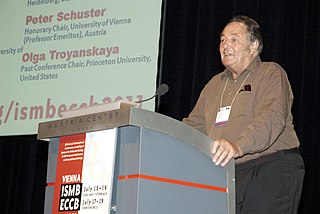
Peter K. Schuster is a theoretical chemist known for his work with the German Nobel Laureate Manfred Eigen in developing the quasispecies model. His work has made great strides in the understanding of viruses and their replication, as well as theoretical mechanisms in the origin of life.
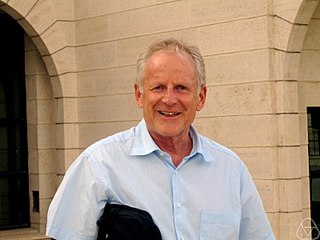
Bruno Buchberger is Professor of Computer Mathematics at Johannes Kepler University in Linz, Austria. In his 1965 Ph.D. thesis, he created the theory of Gröbner bases, and has developed this theory throughout his career. He named these objects after his advisor Wolfgang Gröbner. Since 1995, he has been active in the Theorema project at the University of Linz.

Friedrich Ludwig "Fritz" Bauer was a German pioneer of computer science and professor at the Technical University of Munich.

Charles Weissmann is a Hungarian-Swiss molecular biologist. Weissmann is particularly known for the first cloning and expression of interferon and his contributions to the unraveling of the molecular genetics of neurogenerative prion diseases such as scrapie, Creutzfeldt–Jakob disease and "mad cow disease".
Hans List was a technical scientist and inventor and entrepreneur.
Helmut List is an Austrian engineer, businessman, and philanthropist. He holds the academic title of Professor Doctor. He is CEO of AVL, which was founded by his father, the engineer and inventor Hans List, in 1948. AVL operates globally and is based in Graz, capital of Austria's province Styria.

Edmund Hlawka was an Austrian mathematician. He was a leading number theorist. Hlawka did most of his work at the Vienna University of Technology. He was also a visiting professor at Princeton University and the Sorbonne. Hlawka died on 19 February 2009 in Vienna.
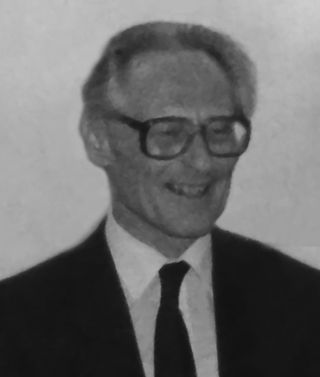
Hans Tuppy was an Austrian biochemist who participated in the sequencing of insulin, and became Austria's first university professor for biochemistry. He was Austrian Minister for Science and Research from 1987 to 1989.
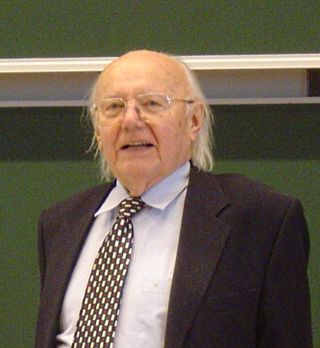
Heinz Zemanek was an Austrian computer pioneer who led the development, from 1954 to 1958, of one of the first complete transistorised computers on the European continent. The computer was nicknamed Mailüfterl — Viennese for "May breeze" — in reference to Whirlwind, a computer developed at MIT between 1945 and 1951.

Meir Wilchek is an Israeli biochemist. He is a professor at the Weizmann Institute of Science.

Karl Schlögl was professor of organic chemistry at the University of Vienna and secretary as well as vice-president of the Austrian Academy of Sciences.
Panayotis G. Katsoyannis was an American biochemist who is often credited with being the first to synthesize insulin while leading a team at the University of Pittsburgh in the early 1960s. His results synthesizing insulin were achieved almost simultaneously with that of Helmut Zahn at RWTH Aachen University in Germany. In his early years, while doing his PhD at the University of Athens Katsoyannis had been under the mentorship of Leonidas Zervas, who previously developed new synthetic methods for asymmetric cysteine-containing peptides as those in insulin.
Karl Kordesch was an Austrian chemist and inventor, most notable for jointly inventing the alkaline battery. In 1953 he moved to the United States as part of Operation Paperclip.
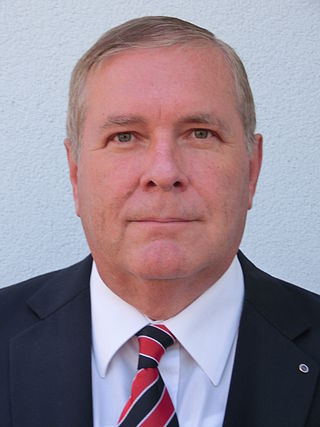
Siegfried Selberherr is an Austrian scientist in the field of microelectronics. He is a professor at the Institute for Microelectronics of the Technische Universität Wien . His primary research interest is in modeling and simulation of physical phenomena in the field of microelectronics.
Otto Kratky was an Austrian physicist. He is best known for his contribution to the small-angle X-ray scattering method, for the Kratky plot, and for the invention of the density metering using the oscillating u-tube principle. The worm-like chain model in polymer physics, introduced with Günther Porod in a 1949 paper, is also named the Kratky–Porod model.

Klaus H. Hofmann was an American biological chemist and medical researcher. The New York Times called Hofmann an "expert on synthesis of body compounds". His career was highlighted by synthesis of a prototype birth control pill, isolation and structural characterization of biotin, determination of the lysine specificity of the pancreatic protease trypsin, the first chemical synthesis of a fully biologically-active portion of the peptide hormone, and structure-function studies on ribonuclease (RNase).
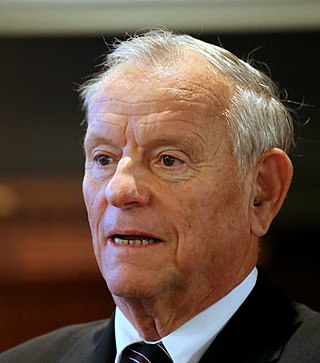
Helmut Rauch was an Austrian physicist. He was especially known for his pioneering experiments on neutron interference.
Josef ("Josi") Singer is a former president and professor of Technion – Israel Institute of Technology.
The Wilhelm Exner Medal has been awarded by the Austrian Industry Association, Österreichischer Gewerbeverein (ÖGV), for excellence in research and science since 1921.
References
- ↑ Goro, Fritz (1964-05-08). "First Man-made Protein in History". Life. Vol. 56, no. 19. New York, NY: Time, Inc. pp. 47–9. Retrieved 2009-11-02.
- ↑ Federwisch, Matthias; Dieken, Markus Leyck; De Meyts, Pierre, eds. (2002). Insulin & Related Proteins – Structure to Function and Pharmacology. Dordrecht, Netherlands: Kluwer Academic Publishers. pp. ix. ISBN 1-4020-0655-1 . Retrieved 2009-11-02.
- ↑ Meienhofer, J.; Schnabel, E.; Bremer, H.; Brinkhoff, O.; Zabel, R.; Sroka, W.; Klostermeyer, H.; Brandenburg, D.; Okuda, T.; Zahn, H., eds. (1963). "Synthese der Insulinketten und ihre Kombination zu insulinaktiven Präparaten" (PDF). Zeitschrift für Naturforschung B (18b). De Gruyter: 1120–1121. doi:10.1515/znb-1963-1223. ISSN 0932-0776. S2CID 97505793 . Retrieved 2020-08-14.
- ↑ "Reply to a parliamentary question" (PDF) (in German). p. 548. Retrieved 4 February 2013.
- ↑ Editor, ÖGV. (2015). Wilhelm Exner Medal. Austrian Trade Association. ÖGV. Austria.